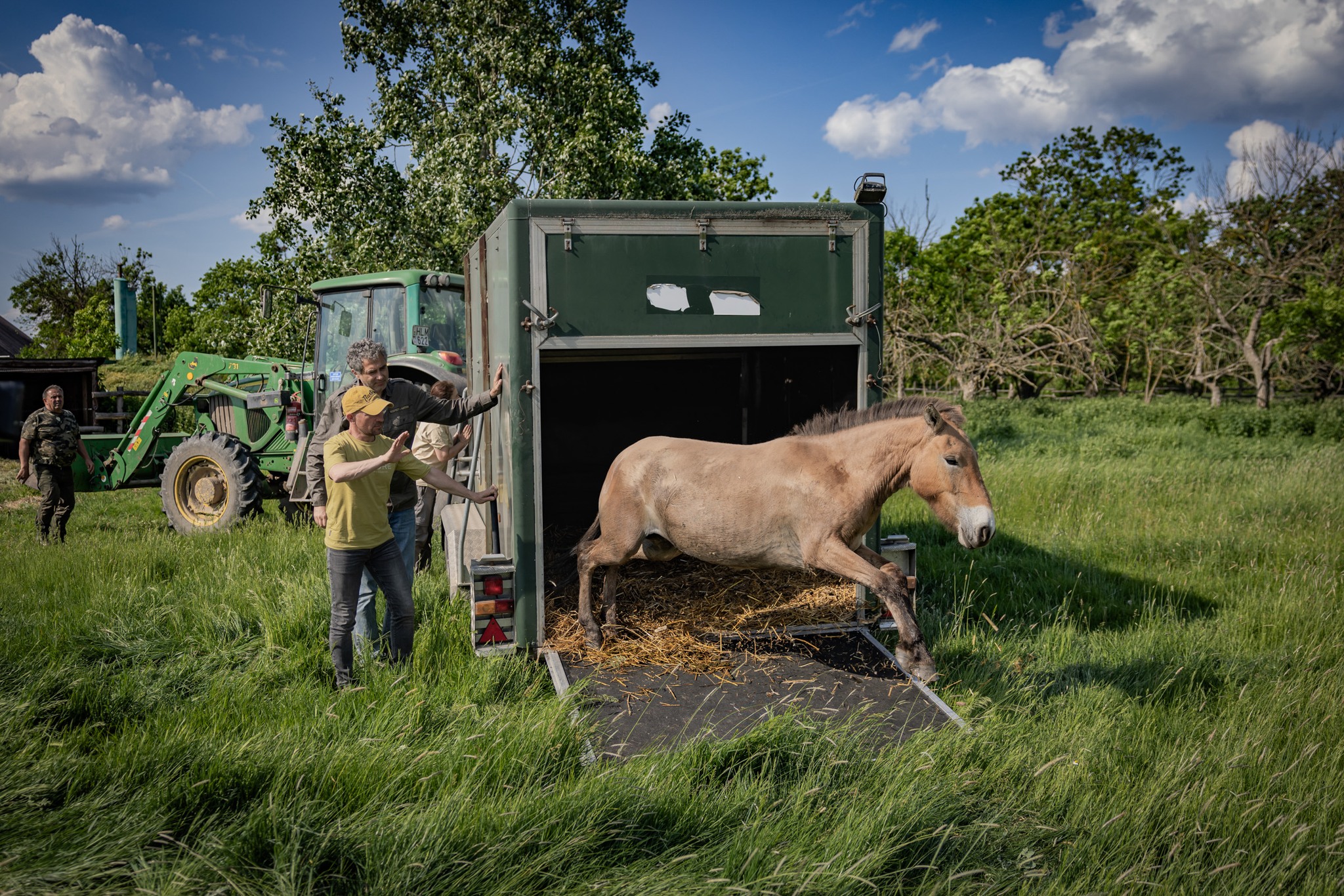Throughout June, Przewalski’s horses will be transported from the Hortobágy National Park to Kazakhstan. This is part of an international cooperation program involving multiple organizations, aimed at reintroducing these wild horses to the Kazakh steppes, from where they disappeared in the 19th century.

The Budapest Zoo and Botanical Garden is also participating in the program alongside the Hortobágy National Park Directorate. Our experts will be responsible for monitoring the health of the animals during the reintroduction process.
In a few weeks, Przewalski’s horses will begin their journey from Hortobágy National Park to Kazakhstan in Central Asia. The aim is to reintroduce the animals to a region where this rare species once lived, but from which it eventually disappeared. The horses currently living in the Pentezug area of Hortobágy will first be captured using tranquilizer darts, then transported by truck in specially designed crates to Debrecen Airport. From there, they will fly on a transport aircraft provided by the Czech Air Force. Upon arrival in Kazakhstan, they will continue their journey by truck to the release site.
Przewalski’s horse is the only remaining truly wild horse species in the world. However, it was only identified by zoologists in the 19th century. It was named after Russian explorer Nikolai Mikhailovich Przhevalsky by zoologist Ivan Semyonovich Polyakov, who first described the species scientifically. In Hungarian, the animal is also referred to as “Przsevalszkij-ló,” “ázsiai vadló,” or simply “vadló.” The species once roamed large areas of Eurasia, but due to expanding human activity, its range gradually shrank. The last wild populations lived in Mongolia, but even those vanished in the 1960s. Thanks to zoos, Przewalski’s horse avoided extinction. Through carefully planned breeding programs, the species was saved. The central registry of the international breeding program has been maintained by Prague Zoo since 1959. The success of this breeding program is reflected in the fact that reintroductions to the wild began in the 1990s—first in Mongolia, and later in other countries.
The current reintroduction program was initiated by the government of the Republic of Kazakhstan. The project is coordinated by Prague Zoo, with partners including the Frankfurt Zoological Society, Berlin Tierpark, and Nuremberg Zoo. The Hortobágy National Park Directorate is a key partner as well, as Europe’s largest Przewalski’s horse population lives in Pentezug, within Hortobágy. Since 1997, the park has been involved in the conservation of the species, providing a 3,000-hectare area suitable for maintaining a large population, while also supporting biodiversity. As a keystone species of grassland ecosystems, wild horses can even enhance biodiversity in the region.
Since the arrival of the first horses in Hortobágy, a strong and healthy population has developed under naturalistic management conditions. Compared to other large populations, all individuals here have known genetic backgrounds, and this is also the most intensively monitored group. These horses are therefore excellent candidates for reintroduction to Asian habitats, especially since they are coming from a semi-wild environment rather than a zoo, allowing them to adapt better to extensive conditions. Their social behavior is also more natural, due to the size and structure of the herd of nearly 300 animals. For these reasons, wild horses from Hortobágy have already been sent to Mongolia, the Russian steppes, and the Iberian Peninsula in previous reintroduction programs. Now, they will be heading to Kazakhstan.
The Budapest Zoo and Botanical Garden has been involved in the Pentezug project from the beginning, so it is no surprise that our veterinary team will again play a role in this latest reintroduction effort. In addition to assisting with the capture and sedation of the animals, the zoo’s veterinarians will also supervise their health throughout the transport process.
While the European partners are preparing the logistics of the transfer, their Kazakh counterparts have also made arrangements to receive the animals. The Committee of Forestry and Wildlife under the relevant Kazakh ministry has designated the Altyn Dala reserve in the Kostanay Region—also known as the “Golden Steppe”—as the reintroduction site. This protected area, established in 2012, covers nearly half a million hectares and provides suitable habitat and protection for the wild horses. Its distance from domestic horse populations also minimizes the risk of hybridization.
Over the past decade, a dedicated station for rewilding herbivores has been established in the area as part of the Altyn Dala Conservation Initiative. This station is operated by the Association for the Conservation of Biodiversity of Kazakhstan (ACBK), and has already been used to reintroduce kulans (Asiatic wild asses). This is where the horses will be released as well. The goal is to transfer up to 40 Przewalski’s horses from Europe to this area over the next five years, laying the foundation for a stable population in Kazakhstan.
The work of our veterinarians in the Pentezug area was also featured in the documentary series Dr. S.O.S. – Emergency in the Wild, broadcast by Spektrum TV. In the video below, thanks to AMC Networks, we show a segment from one of the eight episodes in which our Director of Conservation and Veterinary Services, Dr. Endre Sós, assists the capture team using a tranquilizer rifle.